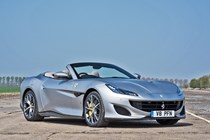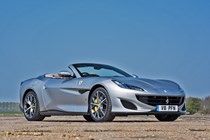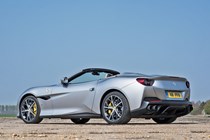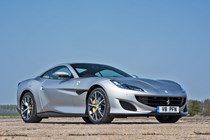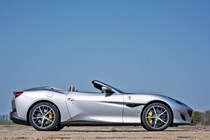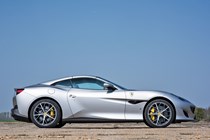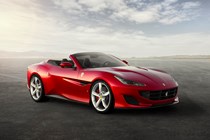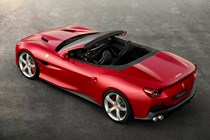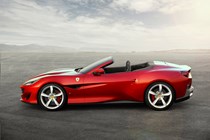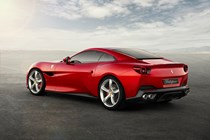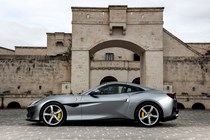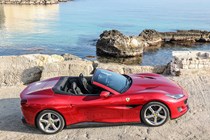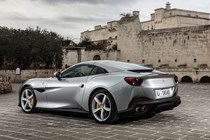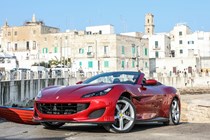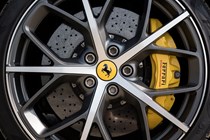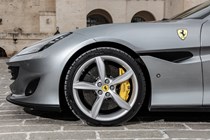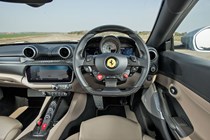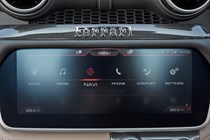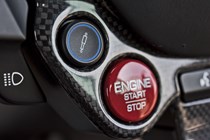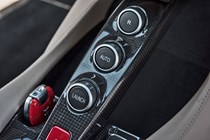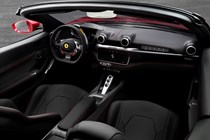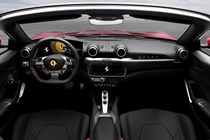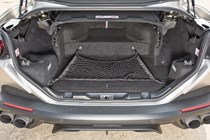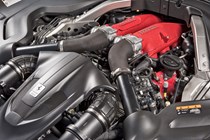
Ferrari Portofino Convertible (2018-2020) interior, tech and comfort
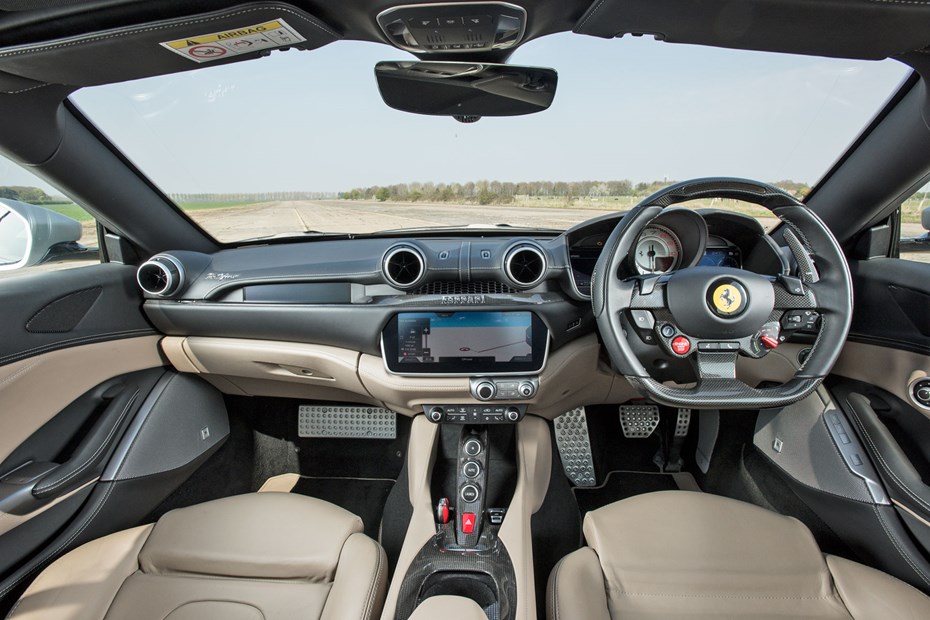
- Driver-focused controls
- Slick multimedia system
- High-quality materials
When you’re sat in the Portofino there’s no doubt you’re in a Ferrari. The driving position is excellent once you’ve adjusted the electric seats. At first you feel very low in relation to the high-set steering wheel and dials, but once you’ve spent some time there, it feels suitably sporty and still offers a good view over the long bonnet.
The cars we’ve tried so far have been decked out with a multitude of optional extras, which makes it difficult to assess the standard cabin, but few cars will leave the factory like that anyway. This is a car that’s built to be personalised, and our experience so far has been one of high-quality materials in every place imaginable.
Ferrari Portofino touchscreen infotainment system
The Portofino’s media system is dominated by the 10.25-inch touchscreen in the dash, which displays slick-looking and intuitive graphical menus that look very up-to-date.
We found it a little slow to respond when zooming in and out of sat-nav maps and flicking between menus, which can make for a frustrating experience as you wait for it to catch up. We hope Ferrari can fix this so it works with the same level of performance as the Portofino’s driving dynamics. With a slight ledge above the screen it can be a little fiddly to make selections at the top of the display as well, but this is nit-picking, really.
One neat option is the passenger display, whereby your left-seat occupant gets their own slim touchscreen and is able to view navigation, trip computer, performance statistics from that drive, or even change the music that’s playing. We’re sure that won’t cause many arguments…
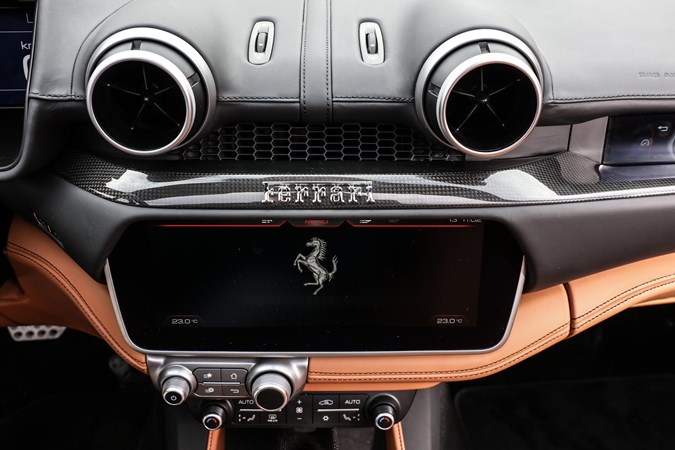
- Magnetic suspension pays dividends
- Seats are comfy yet supportive
- Roof-up cabin refinement excellent
You may not expect a Ferrari to be particularly comfortable, but that’s not the case here. The Portofino has been designed first and foremost as a Grand Tourer (GT), and that means its remit is covering serious miles in comfort.
The optional magnetic suspension does a great job of soaking up bumps and imperfections on even heavily rutted and potholed roads when in Comfort – which is more impressive when you consider just how large the alloy wheels are with low-profile tyres fitted.
But even if you feel like dialling up the character using Sport mode, there’s a button on the steering wheel to soften the suspension so that remains in its more cossetting setting. This, Ferrari calls, Bumpy Road Mode.
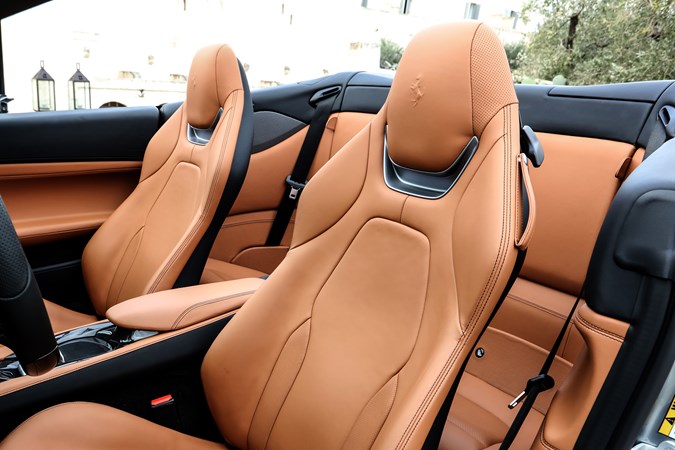
We found the 18-way electrically adjustable seats, which are 20% thinner than in the California T, to be comfortable enough for most for long journeys, although this might not be the case for everyone as they’re quite firm. It’s also quite fiddly reaching the controls for them, and if you want to turn your heated seat on, you need to press a button on the side of the seat and then make a selection on the touchscreen as to how hot you want it. It’s a bit fiddlier than it needs to be.
The cabin is well insulated from wind with the roof down, as long as you keep the windows up and use the wind deflector. With the roof up it’s quieter in there, and a dark roof lining can make it feel a little more compact, but in essence it just ends up feeling like a hardtop car.


